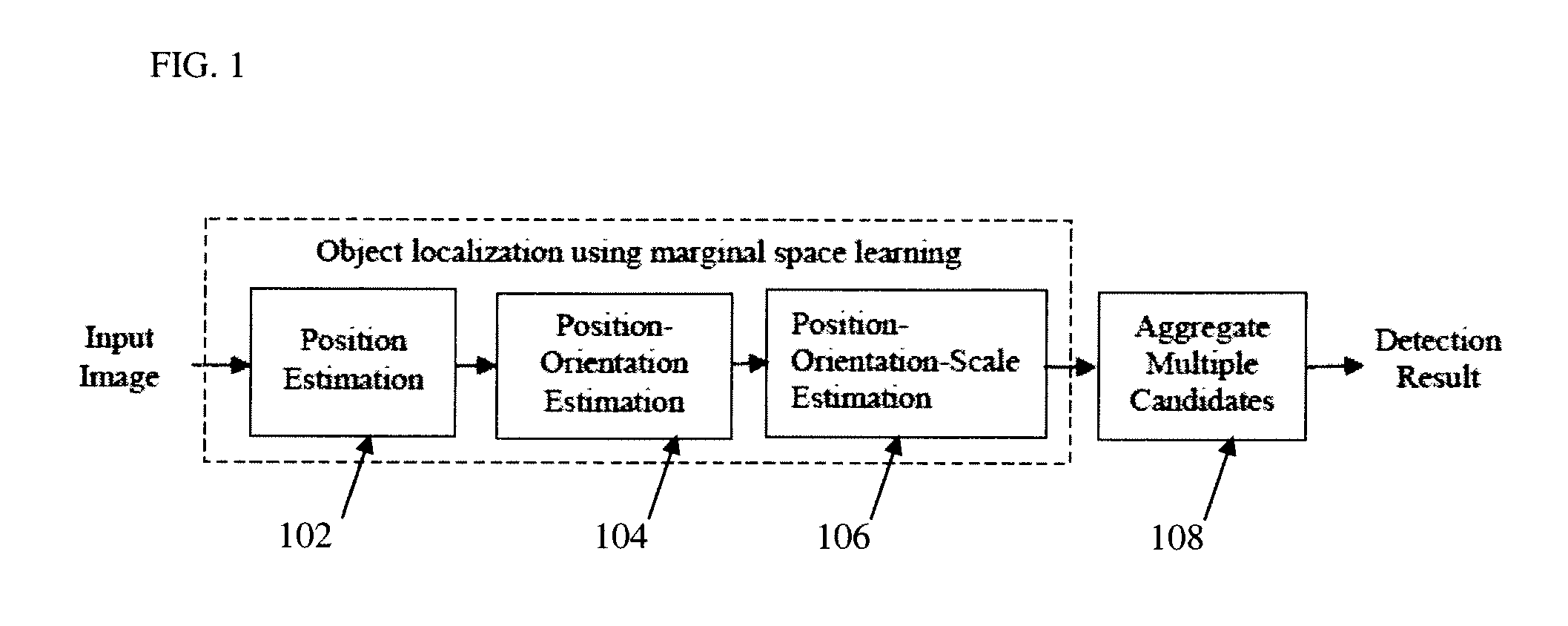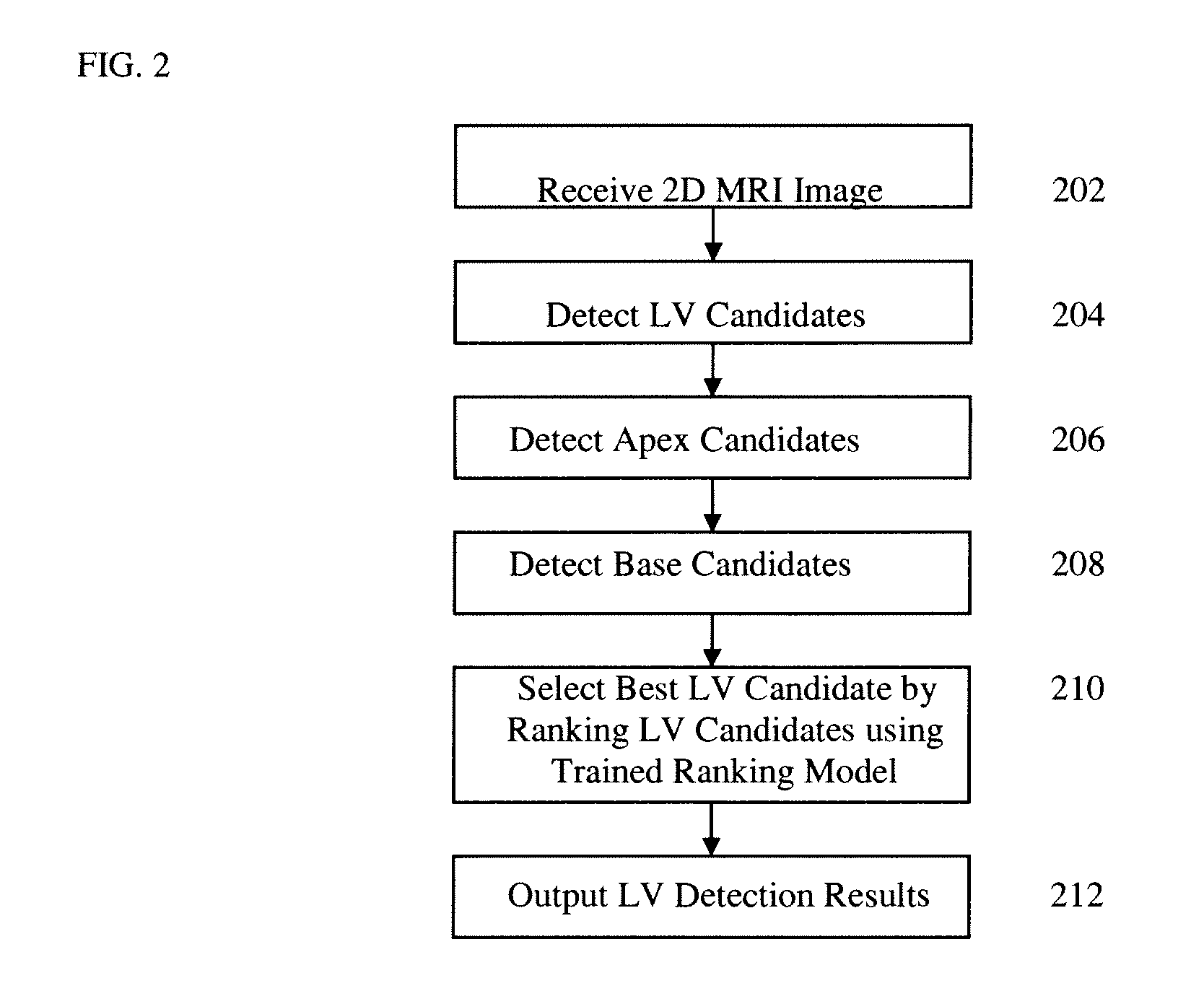Method and System for Left Ventricle Detection in 2D Magnetic Resonance Images Using Ranking Based Multi-Detector Aggregation
a technology of multi-detector aggregation and ranking, applied in the field of medical imaging of the heart, can solve the problems of large flexibility, difficult automatic lv detection, and difficult automatic lv detection, and achieve the effect of avoiding the lv long axis orientation constraint, and avoiding the lv long axis
- Summary
- Abstract
- Description
- Claims
- Application Information
AI Technical Summary
Problems solved by technology
Method used
Image
Examples
Embodiment Construction
[0014]The present invention is directed to a method and system for automatic left ventricle (LV) detection in 2D magnetic resonance imaging (MRI) images. Embodiments of the present invention are described herein to give a visual understanding of the left ventricle detection method. A digital image is often composed of digital representations of one or more objects (or shapes). The digital representation of an object is often described herein in terms of identifying and manipulating the objects. Such manipulations are virtual manipulations accomplished in the memory or other circuitry / hardware of a computer system. Accordingly, it is to be understood that embodiments of the present invention may be performed within a computer system using data stored within the computer system.
[0015]Discriminative learning based approaches are efficient and robust for solving many 2D detection problems. In such methods, shape detection and localization is formulated as a classification problem: wheth...
PUM
 Login to View More
Login to View More Abstract
Description
Claims
Application Information
 Login to View More
Login to View More - R&D
- Intellectual Property
- Life Sciences
- Materials
- Tech Scout
- Unparalleled Data Quality
- Higher Quality Content
- 60% Fewer Hallucinations
Browse by: Latest US Patents, China's latest patents, Technical Efficacy Thesaurus, Application Domain, Technology Topic, Popular Technical Reports.
© 2025 PatSnap. All rights reserved.Legal|Privacy policy|Modern Slavery Act Transparency Statement|Sitemap|About US| Contact US: help@patsnap.com



